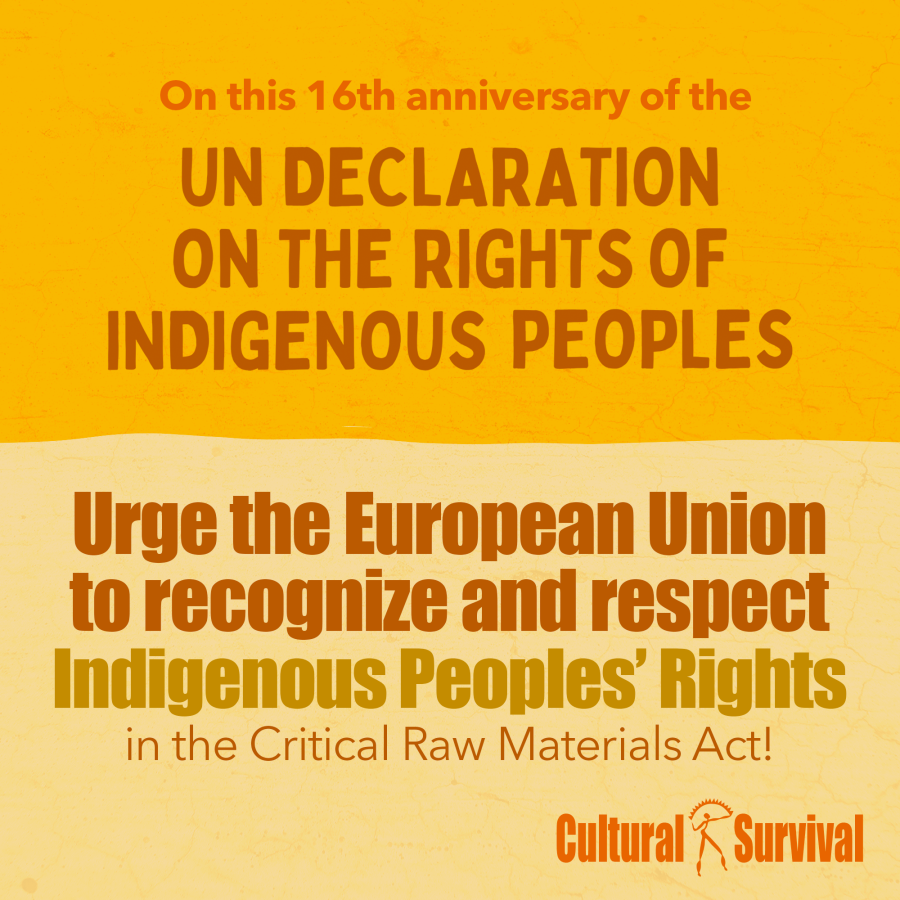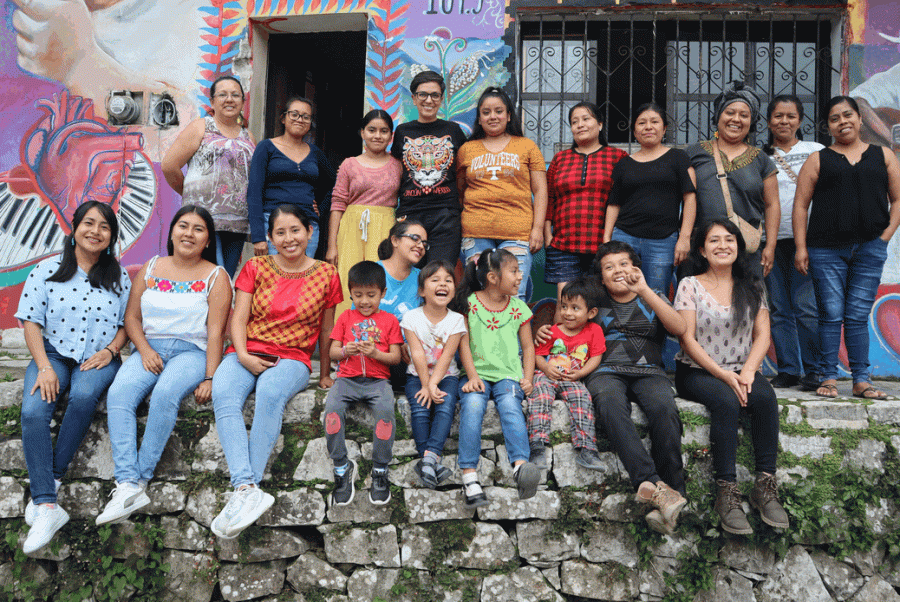
Nearly a month after the Supreme Court upheld the constitutionality of the Indian Child Welfare Act (ICWA) in Haaland v. Brackeen, reflections regarding the meaning of the decision and its future impact for Indigenous children and their families and communities, and the Native American reality nationwide, were considered in an expert panel discussion organized by the Global Alliance for Behavioral Health and Social Justice.
The ruling, which was received largely favorably among Indigenous Nations, took many by surprise.
Melissa Tehee (Cherokee), an associate professor of psychology at Utah State University and Director of the American Indian Support Project, described her initial reaction to the judgment: “I was very apprehensive of celebrating much until I had had the chance to really dig into [the final judgment]. I thought, there has to be a catch somewhere, because, historically, the Supreme Court has started to whittle away Tribal sovereignty every time a case relating to Tribal sovereignty in any way came before them. It took me a few days to feel really good about [the decision].”
Princess Couyancy (Yavapai-Apache), who has experience with child protection cases, shared similar feelings. “I couldn’t believe that we had won, considering the Supreme Court's actions historically. What we need to do now is figure out what we do with this position; we now know our seat is at the table, so we must now figure out how we best prepare our communities to become strong advocates,” she said.
A key takeaway from the 7-2 decision is that it is not a ruling on the substance of the Indian Child Welfare Act’s alleged violation of the Equal Protection Clause, a central argument championed by the State of Texas, many adoption attorneys, and the other plaintiffs in Haaland v. Brackeen. The majority decision, written by Justice Amy Coney Barrett, established that none of the parties had suffered race-based harm that could be addressed before the Court, and therefore the merits of the challenge were not to be adjudicated on by the Court.
A prior adoption case involving the Brackeens was used as a springboard to challenge the constitutionality of the Indian Child Welfare Act in Haaland v. Brackeen, including the alleged violation of the Equal Protection Clause on the basis of race. The 2017 case involved a Navajo and Cherokee boy whom the Brackeens, a white family, had been fostering since 2016 and were petitioning to adopt.
Under the provisions of ICWA, the Navajo Nation was given the preferential opportunity to place the boy with a Navajo family. The Brackeens appealed, leading the prospective Navajo family to back out of the adoption following their legal challenge. While the Brackeens were ultimately allowed to proceed with the adoption, their argument that they had suffered race-based harm in the process would serve as the basis for the 2023 challenge.
Alyssa Mercado, an attorney practicing Indian and Child Law, commented: “When it came to the question of standing [regarding the legal argument of unconstitutional race-based preferences], it was very technical. Rather than getting into the merits of the Equal Protection Clause as we have feared, [this decision] reserves it for a future fight…[this judgment] really is an accomplishment, but it is not a complete victory. There is a lot of work to be done.”
Couyancy added that such technicality creates a gap between the courts’ decisions and the actual effect such decisions will have in the communities. “Unfortunately, what is understood legally and what [the average] person’s understanding is does not always bridge together,” she said. “So, we need to figure out how we [can] best prepare people to be ready to engage in these discussions as they are so technical and legal.”
Some of the work to be done includes mobilizing educational resources beyond just the people who directly encounter the Indian Child Welfare Act in their work (judges, attorneys, social workers, and the like), but also spreading awareness and ultimately changing the narrative among the general public about child protection cases. Mercado referenced the Supreme Court’s decision in Adoptive Couple v. Baby Girl (2013), which held that several sections of ICWA do not apply in voluntary adoption cases and in cases where the parent objecting to the termination of parental rights is a non-custodian.
“One of the ways that [Adoptive Couple v. Baby Girl] was spun in the media in favor of the adoptive couple was emphasizing the sad circumstances: ‘look at this child caught in the middle of this federal regulation; [ICWA] prevented [us] from making a stable and permanent home with this adoptive couple.’ One of the big failures of this case is communication. The media lacked the portrait of how the baby girl was given back to her father for two years after the state proceedings and then removed on the basis of the 2013 Supreme Court decision,” Mercado said. “If your average professional becomes more educated of what child protection cases look like and how they can sometimes last for years...we will find more support amongst everyone for these children who are caught in ugly circumstances.”
Couyancy contributed a personal experience about the potential misapplication of child protection under ICWA. “We are fighting to keep [our children] at home, so we need healthy families,” she said. “People need to understand what it means to be a Native American child. At one point [my family] had a non-Native social worker come into our home and she adopted the opinion that us children needed to be removed because we did not have our own beds and our dad did not make enough money. We were not living up to standards of non-Native living. But I did not know what it meant to be poor in non-Native terms, because my parents always made sure I had all that I needed. Sometimes not understanding the population is just as devastating as not understanding the technicalities [of ICWA].”
Tehee concurred, adding that “there have been a lot of stereotypes of [reservations] being these depleted places where people are poor and the lifestyle is inadequate. I would never give up my family for more money. [On the reservations], families come together and you have a lot of people providing different things. There are too many issues of being disconnected from your culture, whatever your culture is. [We need to spread awareness] on what we know about the damages to these people separated from their culture, communities and families.”
Mercado shared a common misconception applied by judges and attorneys. “Often in state courts, when you do not have practitioners and judges familiar with reservations, the judge wants to put the child in a home with the best economic resources, which is often white families. They are applying their bias, and oftentimes financial reasons are used as a cover for that bias. For example, one judge once ruled that due to only a wood burning stove in a house, the child in question had to be removed due to the lack of a gas supply. But so what with no gas? That is very common in rural areas,” Mercado said.
In his concurring opinion of the majority judgment in Haaland v. Brackeen, Justice Neil Gorsuch arguably makes the case for the need for increased awareness about Native American history, sovereignty, culture, and rights.
Gorsuch wrote: “The Indian Child Welfare Act did not emerge from a vacuum. It came as a direct response to the mass removal of Indian children from their families during the 1950s, 1960s, and 1970s by state officials and private parties. That practice, in turn, was only the latest iteration of a much older policy of removing Indian children from their families…In all its many forms, the dissolution of the Indian family has had devastating effects on children and parents alike. It has also presented an existential threat to the continued vitality of Tribes—something many federal and state officials over the years saw as a feature, not as a flaw…In enacting ICWA, Congress [recognized] that there is no resource that is more vital to the continued existence and integrity of Indian tribes than their children.
“Often, Native American Tribes have come to this Court seeking justice only to leave with bowed heads and empty hands. But that is not because this Court has no justice to offer them. Our Constitution [promises Native American Tribes] sovereignty for as long as they wish to keep it. And it secures that promise by divesting states and authority over Indian affairs and by giving the federal government certain significant (but limited and enumerated) powers aimed at building a lasting peace.
“In adopting the Indian Child Welfare Act, Congress exercised that lawful authority to secure the right of Indian parents to raise their families as they please; the right of Indian children to grow in their culture; and the right of Indian communities to resist fading into the twilight of history. All of that is in keeping with the Constitution’s original design.”
Couyancy concluded the panel with a plea for young Native Americans amidst the devastating effects that decades of assimilation policies have had on their communities: “For any child growing up, the white savior trope tends to be a narrative given to us. We are never going to be non-Native, and we don't want to be. But with us never going to be non-Native, it puts in the minds of some young people that they are never going to make the standard of being human. We are not non-Native, but we are not allowed to be Native anymore, either. Our reservations are the only place we have. So go home and find your roots there, your ancestry there, and your pride there.”
Several resources are available to individuals seeking to gather a greater understanding of ICWA and its context as well as to professionals who encounter Native children and families in their work. These resources are also of great importance to individuals living close to reservations.
National Indian Child Welfare Association (NICWA) offers resources for service providers who encounter cases involving Native children and where the Indian Child Welfare Act’s provisions apply. NICWA offers online and in-person training sessions, workshops, and courses as well as additional resources on their website.
National Child Welfare Workforce Institute (NCWWI) has a resource library of video and written educational, learning, and training material on Tribal child welfare geared toward professionals, Native Americans, and anyone seeking to gather a greater understanding of the Indian Child Welfare Act’s context and child protection. Materials include resources developed by Indigenous Nations in the U.S. and Canada on community engagement and capacity building on issues related to ICWA, including healthy families, ICWA advocacy, and trauma, among others.
Child Welfare Capacity Building Center for Tribes collects resources from and for Tribes on child welfare and protection to strengthen the understanding of child welfare for Tribal leaders and professionals as a means to protect and safeguard Indigenous communities and enhance Tribal sovereignty. Their website includes legal resources, tool kits, and webinars as a way to exchange knowledge among Tribes, professionals, and Indian child protection advocates.



